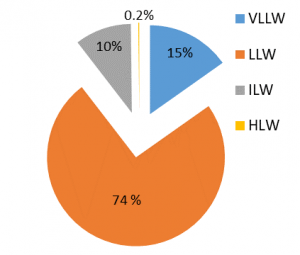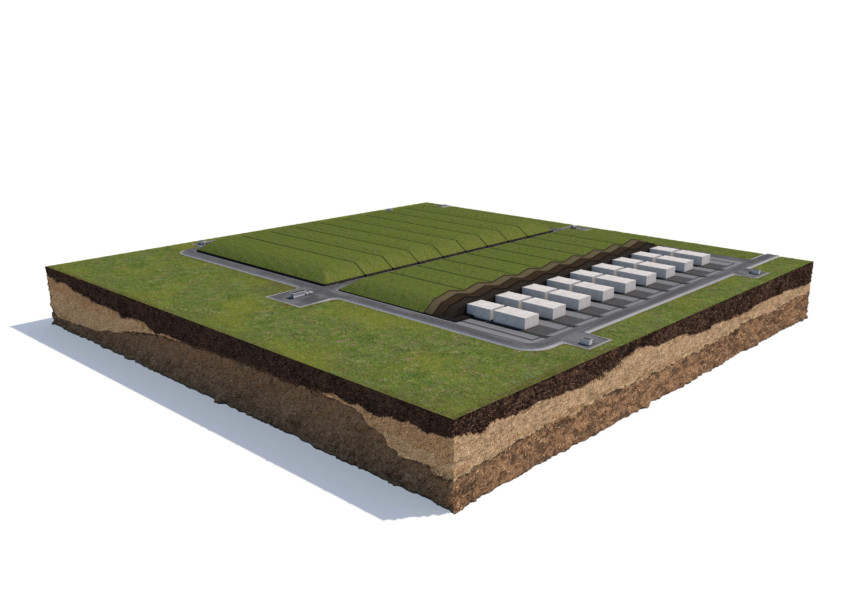“Nuclear Waste Is An Opportunity” – Associazione Italiana Nucleare
Early this year, Italy’s state-owned nuclear waste management company Sogin has published a list of 67 potential sites for a national radwaste storage facility.
The list identifies areas whose characteristics meet localisation criteria defined by the National Inspectorate for Nuclear Safety and Radiation Protection (ISIN) and the International Atomic Energy Agency (IAEA).
The repository is expected to receive 95,000 cubic metres of radioactive waste, 60% of which will derive from nuclear plant decommissioning and the remaining 40% from scientific research, medical and industrial applications.
We share the open letter written by Prof. Renato Angelo Ricci, Honorary President of the Italian Physical Society, and Umberto Minopoli, President of Associazione Italiana Nucleare, on the opportunity represented by the construction of the overmentioned national repository. The letter has been published in several national media and newspapers.
Nuclear applications in several fields (energy, health, industry, research), which are becoming increasingly relevant in advanced societies, are a perfect example of a “circular economy”.
Indeed, the use of the radioactive properties of some isotopes (not only uranium) provides the perfect closure of the cycle of use of the element: the exploitation as fuel, the reuse and the recycling of still usable residue, the treatment to reduce the remaining volumes, the decontamination of parts that can be safely released, the storage of non-releasable and no longer usable residue, which appears at this point as “final waste” and must be stored safely.
For nuclear science, it means: guaranteeing the total separation and absence of impact between the residual radioactivity of waste and objects, people and the environment.
This separation takes place by confining the waste within impermeable “barriers”: as many as 5 (metal barrier, concrete one, engineering one, a storage cell, an artificial seal, and covering hill) for the lower activity waste, which is the majority.
These barriers (surface deposit) are designed and built to guarantee against any infiltration or release (even if only theoretical) for 350 years. It is enough time for the radioactivity to be completely exhausted.
For that part of waste (very small volumes) that decays in a greater number of years, geological confinement (natural barrier) is used, within formations that guarantee impermeability for thousands of years.

High-Level Waste (HLW) represents only 0.2% of all radioactive waste.
What few know, given the biased and misrepresented information – especially in Italy – on nuclear activities, is that these techniques of waste storage and disposal are now consolidated, standardized solutions, practiced since long ago, and without any evidence risk, in all the countries using civil nuclear power. Nowadays, there are hundreds of nuclear storages (surface or depth) all over the world.
In Europe, nuclear repositories are more than 30. Many European countries have more than one (even two or three). In some countries, the investment of the repository has become, for the community that hosts it, a powerful driving force for economic, employment, technological, and even tourism development. Antinuclear prejudice overlooks a key point: the uses of radioactivity for energy production are not, by now, the exclusive ones.
Let’s take a look at Italy: who would have bet on the fact that over 40% of the 96,000 cubic meters of nuclear waste, to be placed in the future national repository, come from the health sector (diagnostics, oncological therapies, drug production…) and other ones. Nuclear technologies and the exploitation of the properties of radioactive isotopes have a growing, ever more pervasive role in advanced societies.
The confinement of waste, to prevent any type of contact with the biosphere, is the peculiarity of civil nuclear activity, which differentiates itself from any other type of industry or activity that emits chemical pollutants (often impacting the environment) and that it does not “close” the cycle of waste produced with the collection and isolation of the waste. The nuclear sector does it, in an almost unique way.
Finally, we invite politicians, administrators and local authorities to be less short-sighted on the opportunities offered by the nuclear repository. If we analyze the institutive law, in addition to the information on safety requirements, on the competitive advantages, and on the incentives for the territories, we understand that there is another factor that should enthrall a smart administrator: the consultation and the feasibility check of the localization, even beyond its final outcome, allows a region to have a detailed investigation, an updated photograph of the status of its environment, of the subsoil, of the orography, of the incidence of natural or anthropogenic factors.
All in all, it’s definitely a great opportunity.

Rendering of the Italian National Radioactive Waste Repository project (Ph. SOGIN)
I rifiuti radioattivi sono un’opportunità, by Associazione Italiana Nucleare



